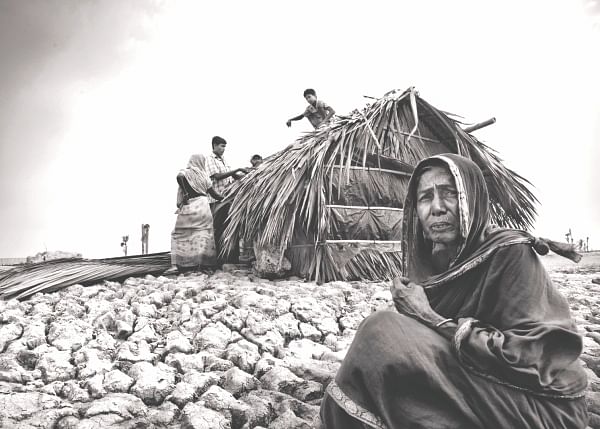| Home - Back Issues - The Team - Contact Us |
 |
| Volume 10 |Issue 40 | October 21, 2011 | |
|
|
Letters The plight of the To-Be-Struggling Artist The article “Where have all the art students gone?” published last week has highlighted a very important aspect of people's perspectives about subjects that do not necessarily guarantee a financially stable future. I am a student myself, and I have had to constantly struggle with my parents and even my friends to make them accept art as a viable career option. While my parents encouraged my “interest” in art when I was younger and proudly showcased my work, as I grew up and told them that I wanted to go to an art school, they suddenly became very unsupportive. They told me to finish my graduation in a “solid” subject like economics or accounting, and tried to assure me that I could always pursue art later in life as a “side” interest. “You'd always have a degree to fall back on if you don't succeed as an artist,” they told me. What is more, even my friends scoffed at me when I told them that I wanted to go to art school, saying that I should stop being so romantic (read: silly) and start looking at life in a pragmatic way. I am still struggling to figure out what is the best step to take for me. Thanks a lot for portraying a topic that is very crucial to my life! Tonmoy Shikhdar Where has Mita gone? For the last few weeks, I have noticed that Mita has disappeared from the pages of the Star. I have been an avid reader of the Star for a long time, and I am used to seeing the “Write to Mita” column every week on the last page of the magazine. But lately, I haven't seen the column, and was wondering if Mita has gone for good, or if she is taking a break from the usual problems that we readers barrage her with. I hope she is back soon because we have grown to accept her as an irreplaceable part of the Star, like Chintito's column or Aasha Mehreen Khan's postscript. We miss her! Sasha Shumi Signs of Paranoia
Reading the article, I was wondering how the writer took a peek into my life. “Signs of Paranoia” reflects the behaviour of many people including myself. At times, I bit my lip, feeling a little foolish that someone had actually given a name to the way I often behave with the people around me. Although the article was not one of those psychological analysis pieces yet it clearly pointed out and reasoned the times when we start to think irrationally. Thanks to the writer for presenting a light amusing article. Next time my friend fails to answer the phone on time, I will try to remind myself of “Signs of Paranoia”. Anisa Alam War Crimes Thanks to The Star for presenting an update and summary of the War Crime Trials of Bangladesh. What I do not understand is why we should care what the world thinks about the fairness of our trial. When countries like US gives a deaf ear to the world and wages war to destroy fictitious weapons of mass destruction, where does fairness go? Did we as a nation go interfere in the trial of Saddam Husain? Just because we rely on their aid money, are we bound to listen to their suggestions when according to Wikileaks the UN itself resigned from helping Bangladesh with the trial, just because a US lobbyist from Pakistan had put pressure on the UN. Injustice was done to our people, not to the people of the US and UK. So it is us who should decide how we carry out our trial using our law. Jihadul Haque Of Salt and Struggle Thanks to The Star for portraying how salinity has been affecting the coastal regions of Bangladesh. Kudos to the photographer for capturing the human and the ecological impact of increases in the salinity level of Bangladesh. Shrimp farming is largely responsible for these increases in salt levels; the coastal regions have been all but sold to powerful elites in the name of economic growth, liberalisation and development. The shrimp farms have helped a handful of people in Bangladesh, but it has displaced the landless and poor marginal farmers, and has negatively impacted the lives and livehoods of many communities. The pictures, although aesthetically pleasing, depolitisise the issue of salt salinity to a certain extent by focusing on the “victims” of cyclones; although shrimp farms are mentioned, the connection between shrimp cultivation and people's hardships isn't explored fully. It doesn't tell the story of resistance of the landless and marginal communities against shrimp ghers. The increase in salinity levels is essential a story about power. Although I appreciate the efforts of the Star to portray this issue, I wish it had taken a more critical stance towards it. Shams Al-Haq
Submission Guideline: Letters to the Editor, Star Diary and Write to Mita, with the writer's name and address, should be within 200 words. All articles should be within 1,200 words. A cover letter is not necessary, but every write-up should include the writer's name, phone number and email address (if any). While The Star welcomes unsolicited articles and photographs, it cannot accept the responsibility of their loss or damage. The Star does not return unsolicited articles and photos. Response time for unsolicited write-ups ranges from three weeks to two months. All articles submitted are subject to editing for reasons of space and clarity. Copyright
(R) thedailystar.net 2011 |

